SSD中使用自带工具进行输出测试结果以及绘图
Posted
tags:
篇首语:本文由小常识网(cha138.com)小编为大家整理,主要介绍了SSD中使用自带工具进行输出测试结果以及绘图相关的知识,希望对你有一定的参考价值。
参考技术A 1.使用一下命令进行输出测试结果:参数解读:
1 ./build/examples/ssd/ssd_detect.bin ssd_detect.bin是ssd中目标检测文件ssd_detect.cpp的编译文件,可以直接使用。(关键)
2 /root/caffe-ssd/models/VGGNet/MyDataSet/SSD_300x300/deploy.prototxt 这个是你的网络结构参数,在训练SSD时候会自动生成。
3 /root/caffe-ssd/models/VGGNet/MyDataSet/SSD_300x300/VGG_MyDataSet_SSD_300x300_iter_40000.caffemodel 这里是训练模型
4 /root/data/MyDataSet/SSD300x300/test.txt 这里是测试数据文件
5 --out_file /root/Results/MyDataSet/SSD300x300/output.txt 这里是输出结果
6. --confidence_threshold 0.5 置信度阈值设置,只有大于这个值得框才会输出。
针对SSD中test.txt文件中没有路径信息,只有图片编号会导致后面显示图片找不到的错误的解决办法:
使用excel进行批量添加路径信息:即可
之后复制会test.txt之后如下:
下面是output_0.5.txt的文件内容:
2.根据结果绘图:
参数解析:
1 python examples/ssd/plot_detections.py
2 /root/Results/MyDataSet/SSD300x300/output_0.5.txt
3 /root/data/VOCdevkit
4 --labelmap-file data/MyDataSet/labelmap_voc.prototxt
5 --save-dir /root/Results/MyDataSet/SSD300x300/ssd_result_0.5
最后在相应目录下即可得到最终结果:
文件IO操作开发笔记:使用Cpp的ofstream对磁盘文件存储进行性能测试以及测试工具
前言
在做到个别项目对日志要求较高,要求并行写入的数据较多,尽管写入数据的线程放在子线程,仍然会造成界面程序的假死(实际上Qt还是在跑,只是磁盘消耗超过瓶颈,造成假死(注意:控制台还能看到打印输出,linux则能看到打印输出)。
本篇升级了测试工具,并且测试了ofstream在USB3.0和M.2SSD上的写入性能。
更新版本版本,新增了c++的ofstream写入方式。
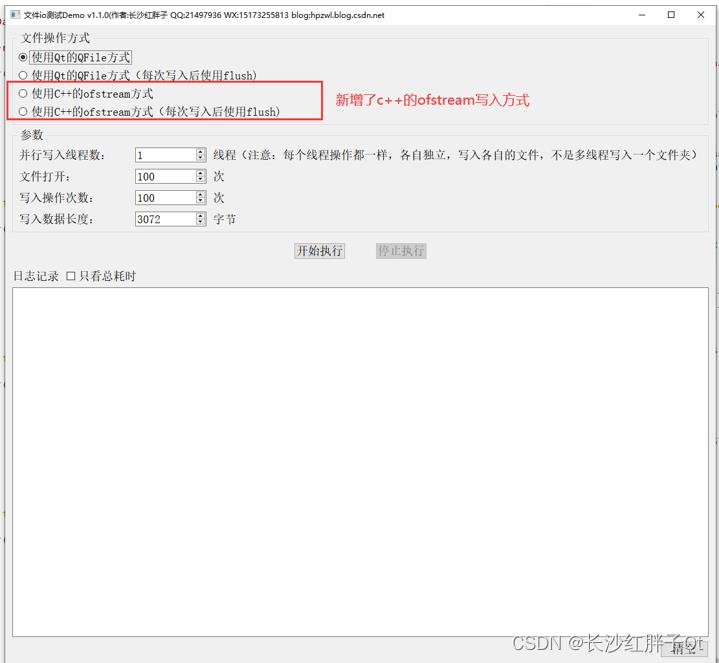
请自行溯源搜索,发不出

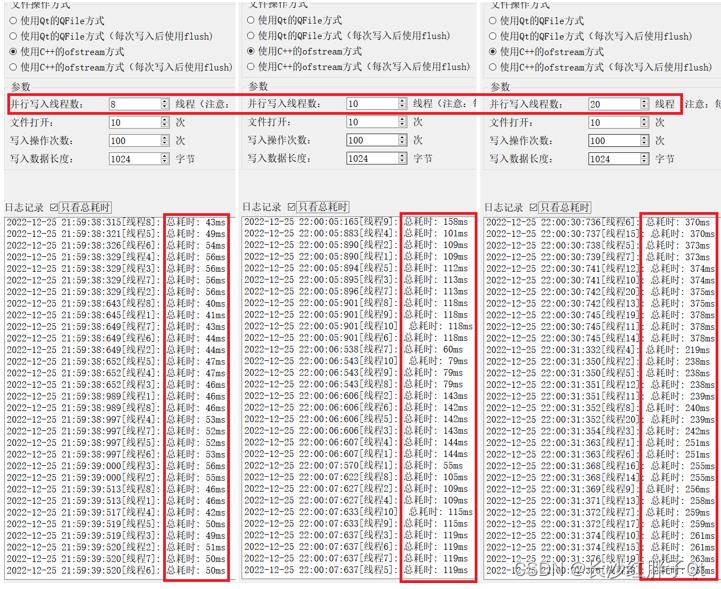
所以,线程越开越多,在某一个阈值线程数(实际打开操作的文件数)会导致性能大幅下降,而且会持续有多个阈值类似的。
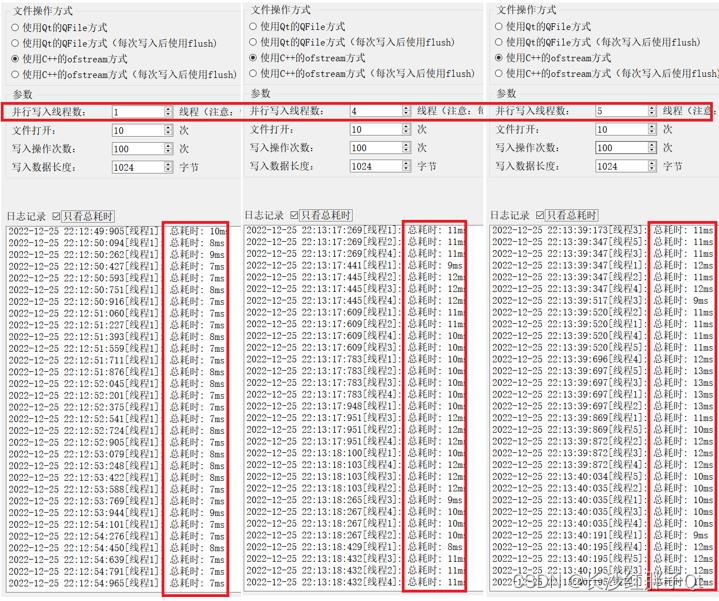
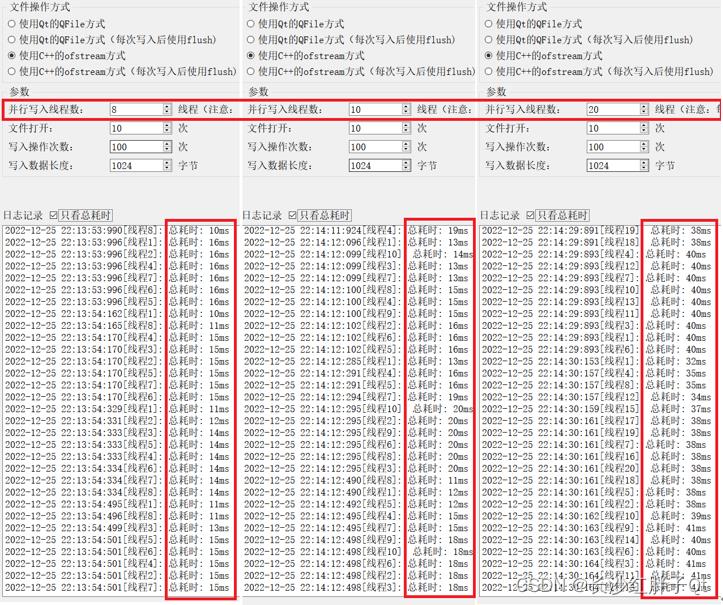
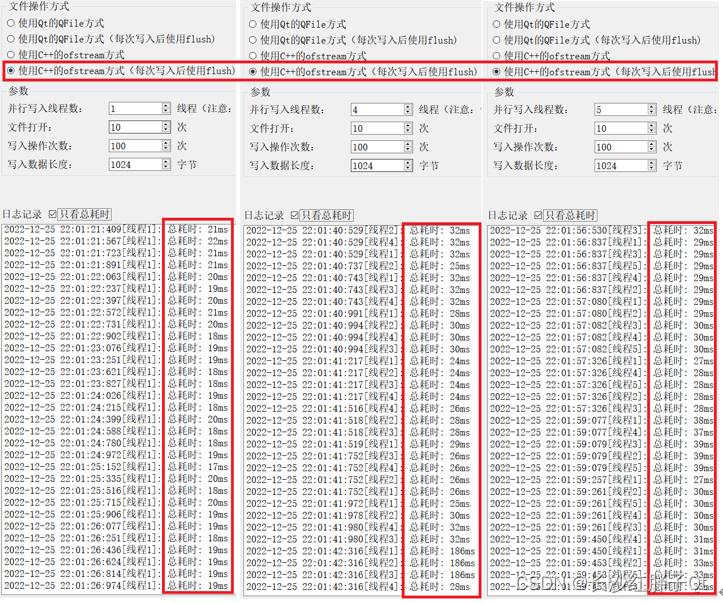
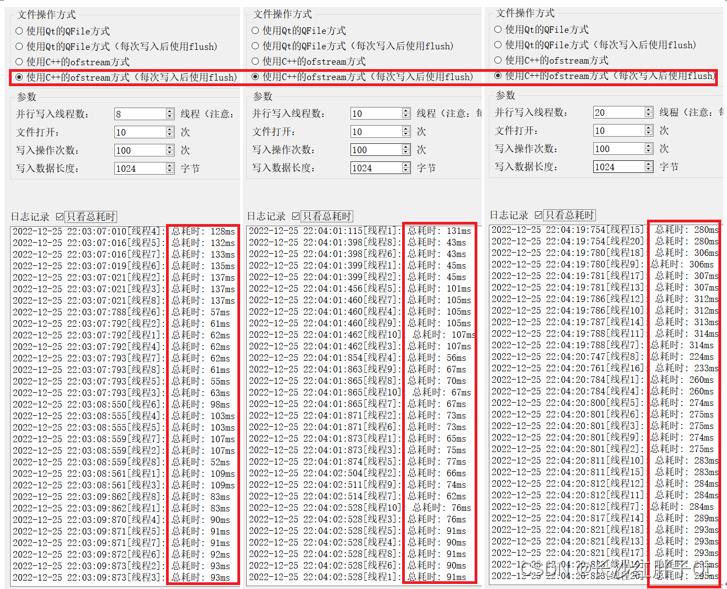
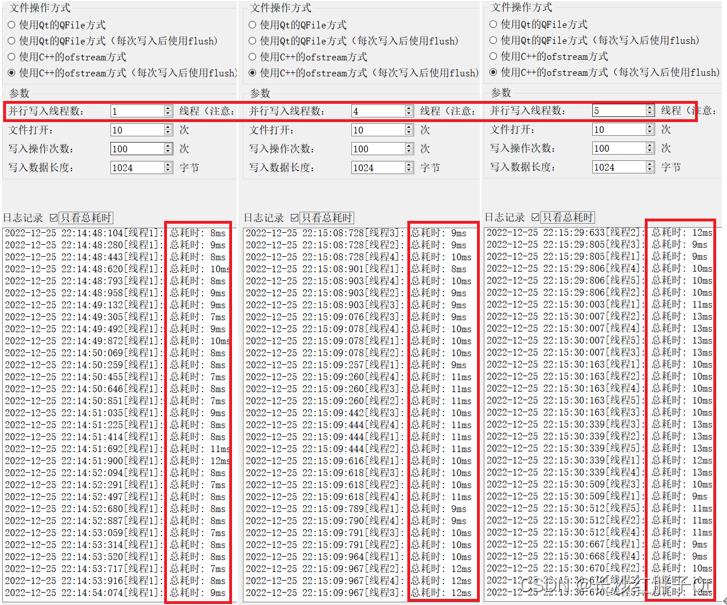
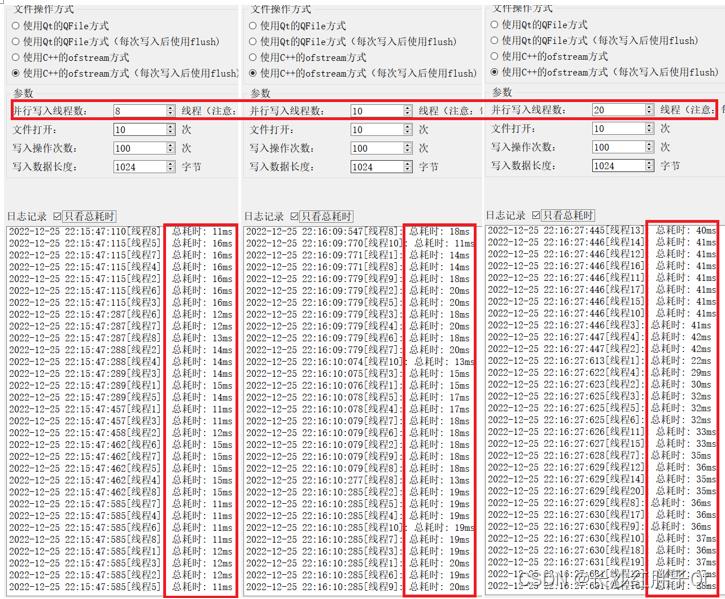
结论:这个明显受到硬盘数据传输的影响。
void FileIoTestManager::slot_optFileUseCppOfstream(int loopTime, int loopWrite, int dataSize, bool flush)
QDir dir;
QString dirPath = QString("%1/%2")
.arg(QApplication::applicationDirPath())
.arg(QDateTime::currentDateTime().toString("yyyy-MM-dd hh_mm_ss_zzz"));
if(dir.mkpath(dirPath))
message(QString("创建文件夹成功: %1").arg(dirPath));
else
message(QString("创建文件夹失败: %1").arg(dirPath));
// 生成数据
message(QString("生成测试数据,数据长度: %1").arg(dataSize));
QByteArray byteArray;
byteArray.append(dataSize, 0xFF);
message(QString("==========================测试开始=============================="));
double totalTime = 0; // 总计时间
double fileTotalTime = 0; // 操作单个文件总时间
double writeFileTime = 0; // 单个文件单词写入时间
totalTime = QDateTime::currentDateTime().toMSecsSinceEpoch() * 1.0f;
for(int loopIndex = 0; loopIndex < loopTime; loopIndex++)
QString filePath = QString("%1/%2_%3")
.arg(dirPath)
.arg(QDateTime::currentDateTime().toString("hh_mm_ss_zzz"))
.arg(loopIndex, 6, 10, QChar(\'0\'));
std::ofstream outFile;
outFile.open(filePath.toUtf8().constData());
writeFileTime = QDateTime::currentDateTime().toMSecsSinceEpoch();
for(int writeIndex = 0; writeIndex < loopWrite; writeIndex++)
// message(QString(" 第%1次写入文件,写入长度%2字节").arg(writeIndex + 1).arg(dataSize));
outFile << byteArray.constData();
if(flush)
outFile.flush();
if(_stop)
outFile.close